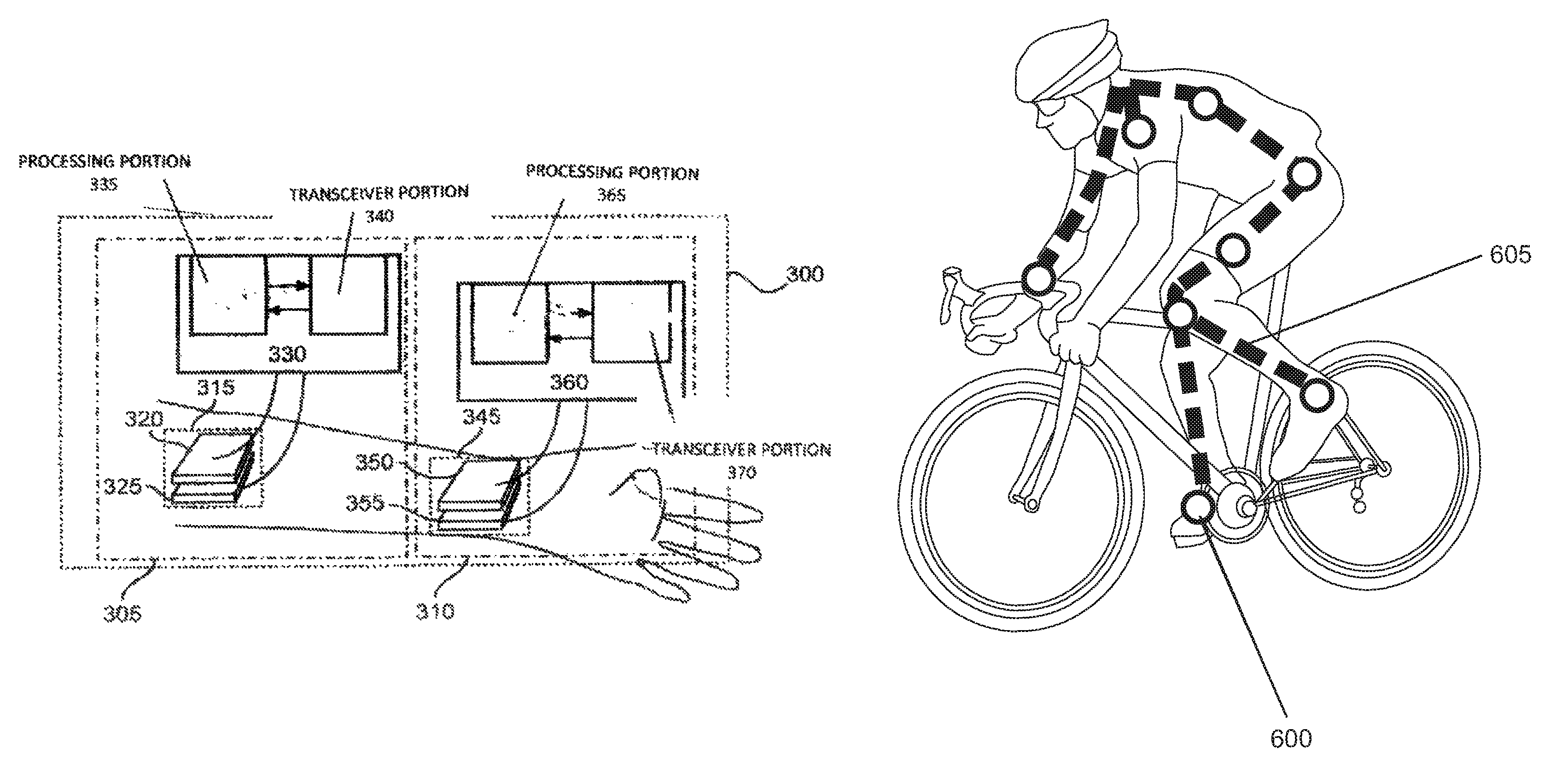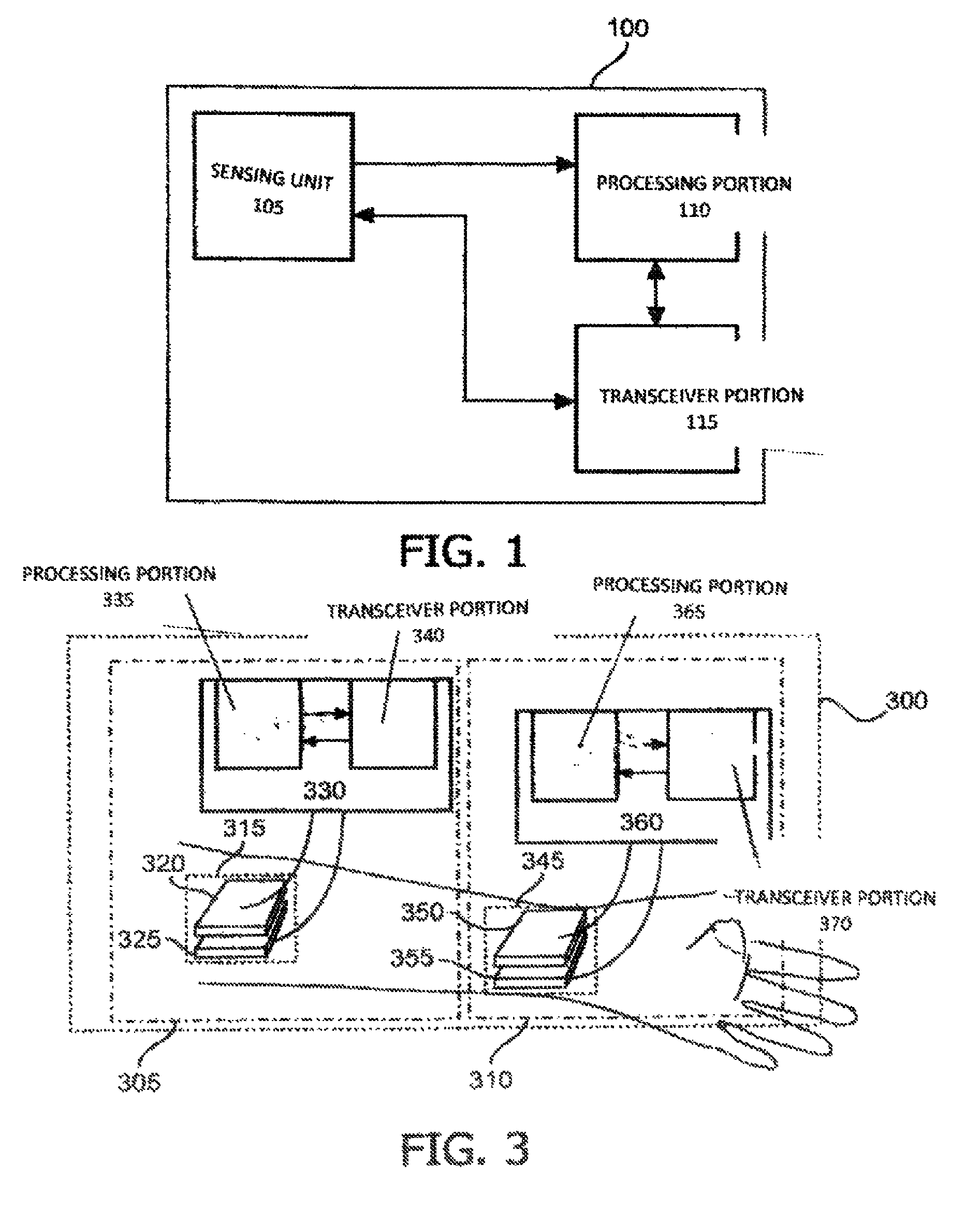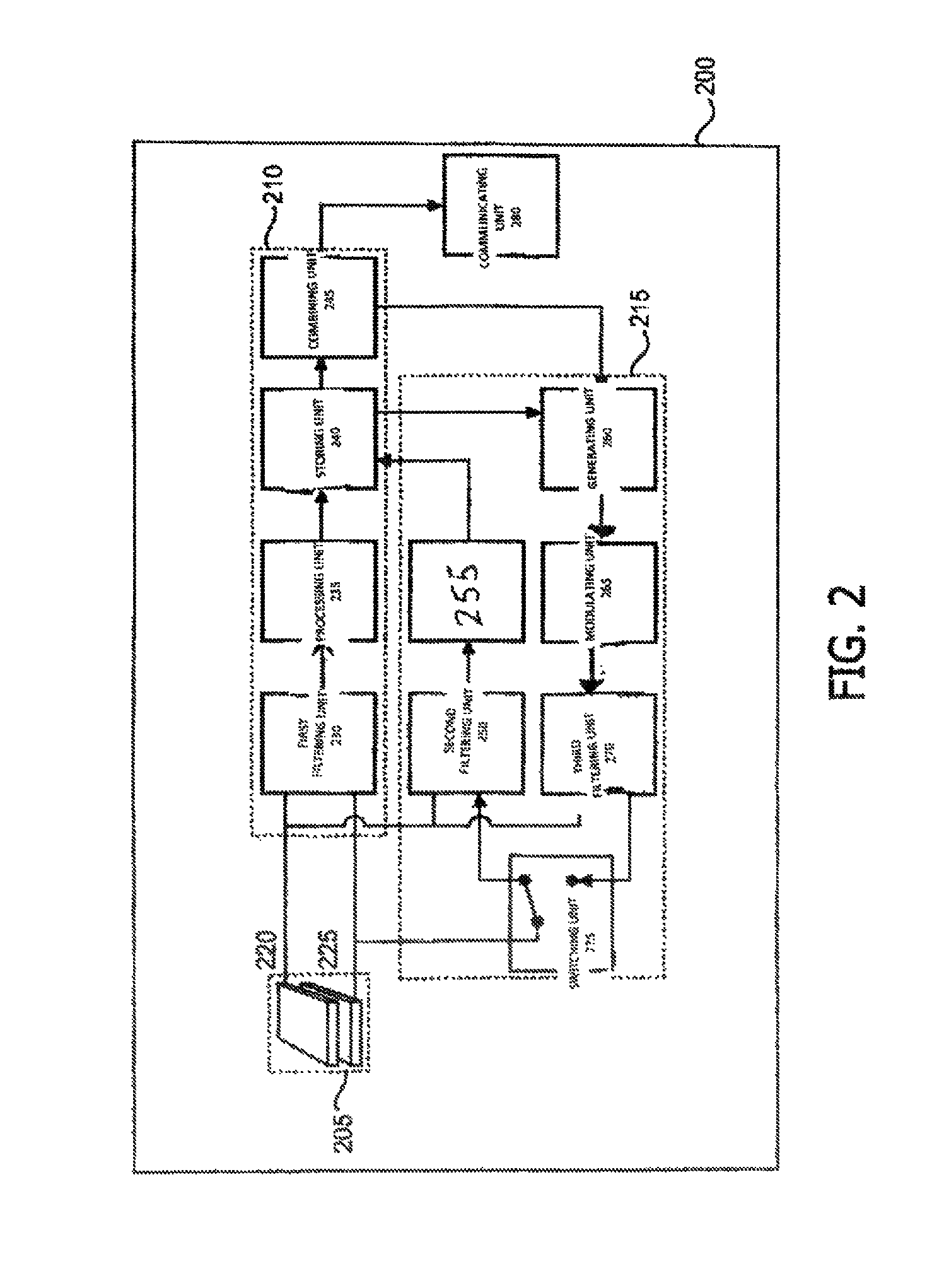Capacitive sensing and communicating
a capacitive sensing and communication technology, applied in the field of capacitive sensing and communication, can solve the problems of many errors during system operation, errors may occur, communication is only possible between devices, etc., and achieve the effects of low cost, low power consumption and low complexity
- Summary
- Abstract
- Description
- Claims
- Application Information
AI Technical Summary
Benefits of technology
Problems solved by technology
Method used
Image
Examples
Embodiment Construction
[0046]FIG. 1 shows a schematic block diagram illustrating the basic arrangement of an exemplary device according to the embodiment. A device 100 comprises a sensing portion or unit 105, a processing portion 110 and a transceiver portion 115. The device 100 can be a sensor or sensor node and is placeable on or close to a human or animal body. A physiological signal may be capacitively sensed or measured by the sensing unit 105. The sensed physiological signal may be supplied from the sensing unit 105 to the processing portion 110. The processing portion 110 can filter and process the sensed physiological signal. Further, it can store a processing result or the unprocessed physiological signal and supply the same to the transceiver portion 115. In addition, a body coupled communication (BCC) signal may be communicated by the sensing unit 105, wherein the human or animal body is used as a communication medium. The BCC signal can be intended for a body area network (BAN). The transceive...
PUM
 Login to View More
Login to View More Abstract
Description
Claims
Application Information
 Login to View More
Login to View More - R&D
- Intellectual Property
- Life Sciences
- Materials
- Tech Scout
- Unparalleled Data Quality
- Higher Quality Content
- 60% Fewer Hallucinations
Browse by: Latest US Patents, China's latest patents, Technical Efficacy Thesaurus, Application Domain, Technology Topic, Popular Technical Reports.
© 2025 PatSnap. All rights reserved.Legal|Privacy policy|Modern Slavery Act Transparency Statement|Sitemap|About US| Contact US: help@patsnap.com



